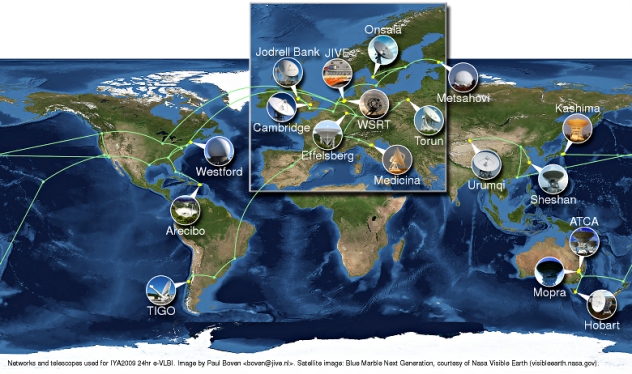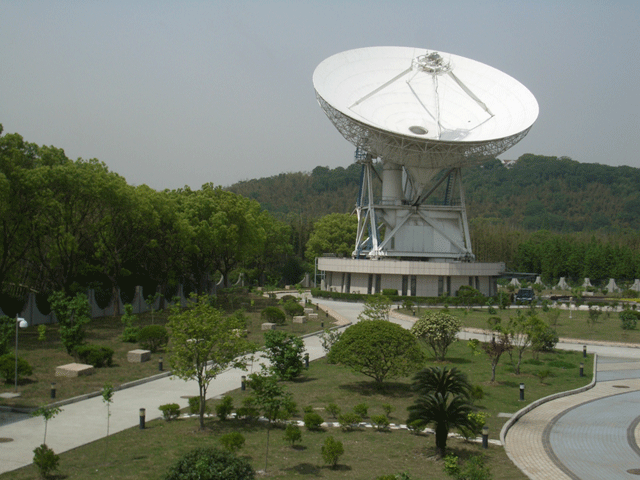|
|
| The Shanghai Radio Telescope participates in marathon observation |
 |
Text Size: A A A |
|
SHANGHAI, P.R. China (14 February 2009) - 17 Radio telescopes in Asia, Australia, Europe, North America and South America successfully conducted a nearly continuous 33-hour e-VLBI observation of three quasars (J0204+1514, 0234+285 and 3C395) 15-16 January 2009. The virtual radio interferometer tracked the extra-galactic objects as they rose and set with the rotation of the Earth. The Shanghai Radio Telescope led the observing marathon each day along with telescopes in Australia and Japan.
Using an astronomical technique called real-time, electronic Very Long Baseline Interferometry or e-VLBI, participating telescopes observed the same region of sky simultaneously. The binary data were streamed out of the Shanghai Radio Telescope through high-speed networks, including the Chinese Sciences and Technology Network, and finally fed into a central processor at JIVE (Joint Institute for VLBI in Europe) in the Netherlands. Operating in real-time, this central data processor, a purpose-built supercomputer, decoded, aligned and correlated the data for every possible pair of telescopes.
This e-VLBI observation was made possible by the Express Production Real-time e-VLBI Service (EXPReS) and the cooperation of radio observatories and National Research and Education Networks. Funded by the European Commission, EXPReS has been working since 2006 to connect radio telescopes around the world with the correlator at JIVE using high-speed optical networks.
The observation was demonstrated live during the opening ceremony of the International Year of Astronomy, 15-16 January in Paris, and showcased e-VLBI as a newly-available, production-level astronomical technique to over 900 inquisitive and enthusiastic attendees, including astronomers, diplomats, government representatives and students from over 100 countries.
Through e-VLBI, astronomers can generate images of cosmic radio sources with up to one hundred times better resolution than images from the best optical telescopes. The ability to send data electronically and correlate it in real-time means astronomers can have their image within hours of doing an experiment, rather than weeks later as with the traditional VLBI method of recording data onto disks and shipping them to the correlator.

Figure: Telescopes and networks used for e-VLBI observation demonstrated 15-16 January at the International Year of Astronomy (IYA 2009) Opening Ceremony. Image credit: Joint Institute for VLBI in Europe.

Figure: The Shanghai Radio Telescope. Credit: SHAO About Shanghai Sheshan 25m Radio Telescope :
http//www.shao.ac.cn/
An educational Web site about e-VLBI :
http//www.expres-eu.org/iya2009/
For more information about the e-VLBI observation, see:
http://www.expres-eu.org/IYA2009_opening.html.
|
|